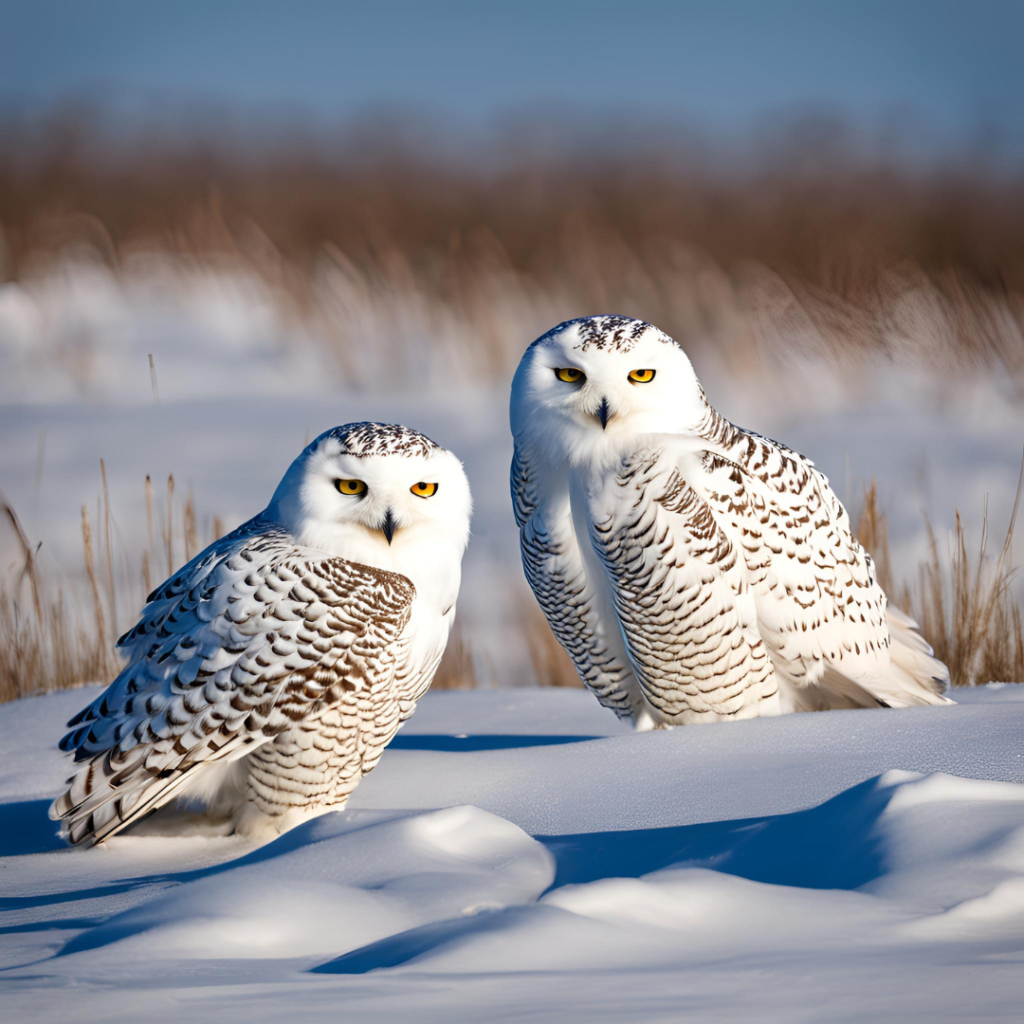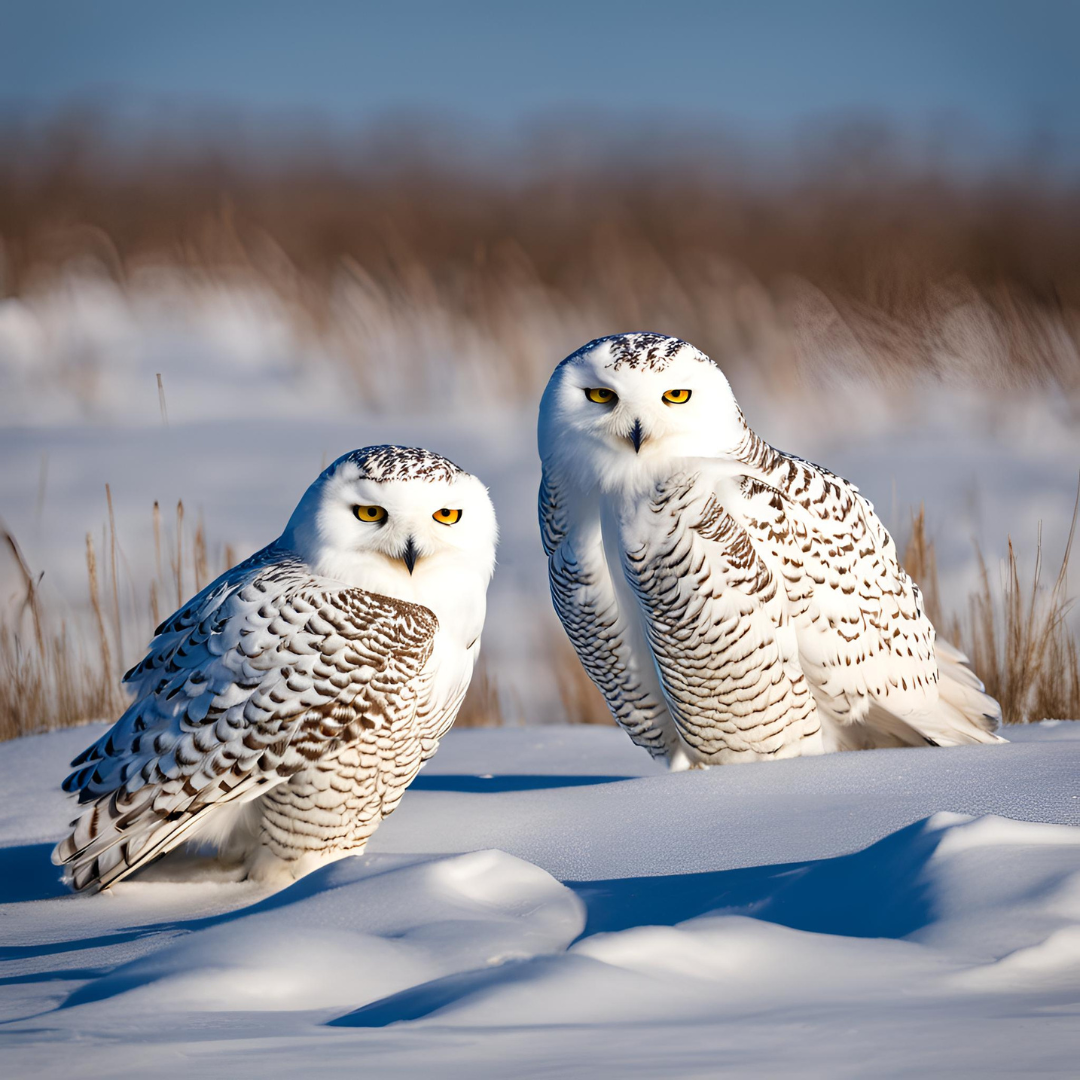Where Do Snowy Owls Live?

Snowy owls are among nature’s most iconic birds, known for their stunning white feathers and intense yellow eyes.
Despite few could survive in the most inhospitable places imaginable, these extraordinary organisms have evolved to flourish.
Let’s dive into the world of snowy owls to discover their natural habitats, migration patterns, and the incredible ways they survive in these unique settings.
Exploring the Home of Snowy Owls
Snowy owls (Bubo scandiacus) are native to the Arctic, a region encompassing parts of North America, Europe, and Asia. Unlike most owls that favor forested environments, snowy owls are drawn to the wide-open expanses of the tundra, where trees are sparse, and prey is plentiful.
Life on the Arctic Tundra
The Arctic tundra serves as the primary habitat for snowy owls. This vast, barren landscape might seem inhospitable to most creatures, but it’s perfect for these birds of prey. With an abundance of small mammals like lemmings, the tundra provides the food source they depend on to survive and raise their young.
Key Features of the Tundra:
Open, flat terrain with minimal vegetation
cold winters and short summer
Ground covered in mosses, lichens. low shrubs
Prey availability that fluctuates with the seasons
The tundra may seem desolate to us, but it’s a bustling ecosystem for the wildlife that calls it home.
Where Do Snowy Owls Go in Winter?
Although snowy owl are year-round residents of the Arctic, they occasionally migrate to other regions during the colder months. This migration often happens when food becomes scarce in their native habitat.
Winter Migration Destinations
In winter, snowy owls can be found in a surprising range of locations, including:
Canada: Southern provinces with open grasslands and farmlands
United States: Northern states like Minnesota, Wisconsin, and New York, with rare sightings further south in places like Kansas or even Texas
Europe: Coastal locations of Scandinavia, Northern Russia and selected regions in the British Isles
These areas provide a steady supply of food, including rodents, birds, and even fish in some coastal regions. Snowy owls are incredibly resourceful and adapt to their new surroundings quickly.
How Snowy Owls Survive in Harsh Climates
Snowy owls are marvels of adaptation. They’ve evolved to withstand the challenges of their extreme habitats while remaining efficient hunters.
Warm Feathers: Their thick plumage keeps them warm in freezing conditions, with even their legs and toes covered in feathers for extra insulation.
Perfect Camouflage: The snowy white feathers blend seamlessly with the Arctic landscape, offering both protection from predators and a stealth advantage for hunting.
Hunting Prowess: Snowy owls rely on their sharp vision and acute hearing to locate prey, even under snow or in low light.
These adaptations make them well-suited for the unique demands of their environment.
Unusual Sightings: When Snowy Owls Leave the Arctic
Every so often, snowy owls appear in unexpected places, far from their usual range. These events, known as irruptions, occur when their population booms and competition for food drives some birds to migrate southward.
During irruptions, snowy owls have been spotted in:
Urban environments, such as airport runways or city rooftops
Europe: Coastal locations of Scandinavia, Northern Russia and selected regions in the British Isles
Farmlands and open plains, where hunting is easy
Such sightings often attract birdwatchers and wildlife enthusiasts eager to catch a glimpse of these Arctic visitors.
Protecting the Habitat of Snowy Owls
Snowy owl face growing threats from habitat loss and climate change, which impact both their Arctic home and the availability of prey.
Conservation is vital in order to protect these amazing birds for future generations.
Steps we can take to protect snowy owls include:
Preserving the Arctic tundra by preventing industrial development
SCO (Supporting conservation organizations) that study and protecting owls population
Promoting the understanding of biodiversity necessity in Arctic ecosystems
Organizations like the World Wildlife Fund (WWF) and the Snowy Owl Conservation Project work tirelessly to protect these majestic birds.
Conclusion: Nature’s Arctic Marvel
Snowy owl are truly remarkable birds, embodying resilience and beauty in equal measure. Their ability to adapt to the harshest climates on Earth, combined with their occasional forays into temperate regions, makes them one of the most intriguing species of owl.
By understanding where snowy owl live and the challenges they face, we can better appreciate their role in our planet’s ecosystems and work to protect their habitats. Whether in the Arctic tundra or a rare appearance in your local area, snowy owl remind us of the wonders of the natural world.
